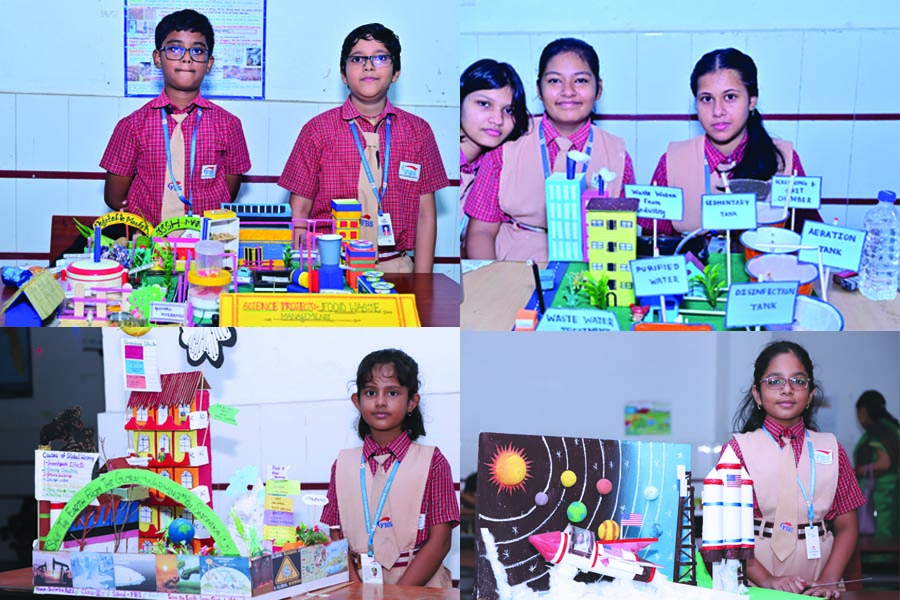
1 Nov 2024
Science Exhibition at FBS Showcases Innovation and Creativity
Future Bhubaneswar School hosted a spectacular Science Exhibition that brought together students, teachers, and parents to celebrate innovation, creativity, and the wonders of science. The event, held on 1st November, 2024, featured an impressive array of projects from the school’s young scientists, spanning various disciplines, from robotics and artificial intelligence to environmental sustainability and space exploration.
The exhibition was inaugurated by Retd. Prof. Tapadhanu Panda, Rama Devi Women’s University, Bhubaneswar, who praised the students for their outstanding efforts and emphasized the importance of scientific curiosity in shaping a brighter future. “It’s truly inspiring to see the talent and passion these young minds bring to their projects,” said the chief guest. “Events like this cultivate critical thinking, teamwork, and problem-solving skills that are essential for the leaders of tomorrow.”
Some of the standout displays included a robotic arm designed to assist in medical surgeries, a solar-powered water purifier, and a smart waste management system. Students demonstrated how these projects could tackle real-world problems such as environmental pollution and healthcare challenges.
Visitors had the opportunity to participate in hands-on science experiments. One of the most popular attractions was a virtual reality (VR) simulation that allowed students to explore the solar system and outer space. Another highlight was a physics demonstration explaining the concepts of gravity, motion, and magnetism.
In line with global efforts to protect the environment, several projects focused on renewable energy, plastic recycling, and sustainable agriculture. A group of students presented a greenhouse model that uses hydroponics to grow plants without soil, conserving water and reducing waste.
Students also displayed posters explaining their research on topics such as climate change, the human genome, and advancements in artificial intelligence. These posters reflected the students’ dedication to understanding complex scientific issues and their potential impact on society.
The exhibition was entirely student-driven, with participants ranging from young children to senior students. Each student presented their work with confidence, often explaining their projects to attendees and answering questions. “This exhibition is a chance for us to showcase what we’ve learned and to encourage others to get excited about science,” said a participant in the robotics project.
The Science Exhibition was adjudicated by a panel of esteemed judges comprising of Mr. T.T. Rao, a veteran educator and retired TGT Mathematics faculty member from FBS, Prof. Dr. Tapadhanu Panda, renowned academic and retired professor from Rama Devi Women’s University, Prof. Dr. Mihir Samantray, accomplished mechanical engineer and faculty member at MITS Rayagada, Mr. Sarat Chandra Panda, principal of Centre for Teachers’ Training and Research Institute, South Dinajpur, West Bengal.
The projects were evaluated based on five key criteria: scientific merit and originality, creativity and innovation, clarity and effectiveness of presentation, relevance to real-world problems, and teamwork and collaboration. The judges followed a rigorous evaluation process, which included reviewing project displays and documentation, interacting with participants, assessing impact and applications, and deliberating to select winners.
We extend our sincere gratitude to our esteemed judges for their valuable time, expertise, and constructive feedback, which greatly enhanced the quality and credibility of our science exhibition.
The Science Exhibition at Future Bhubaneswar School was a resounding success, fostering a spirit of scientific inquiry and collaboration among the students. It highlighted not only the academic excellence of the school but also its commitment to preparing students for a future in which science and technology play a key role in solving global challenges.
As the exhibition came to a close, the students and teachers expressed their eagerness to continue exploring new scientific frontiers and innovations in the years to come.


